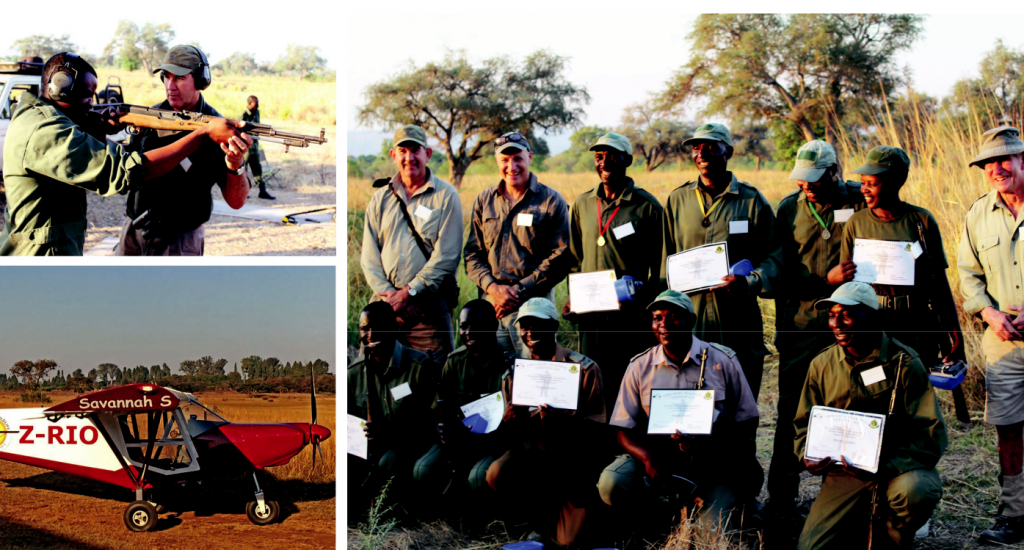Article Zambezi Elephant Fund
Images Zambezi Elephant Fund and Steven Chikosi

Zimbabwe is home to the world’s second largest population of African elephant, which places a massive responsibility on all of us to work together and make sure that population numbers remain healthy across the Zambezi Valley.
In Africa, collaboration is still an unusual conservation model, but working well together only amplifies the impact of conservation efforts. This is becoming more and more apparent in Zimbabwe’s Zambezi Valley. Zambezi Elephant Fund has its roots in the support of anti-poaching activities in the Zambezi Valley, but it is growing today into one that supports, connects and grows relationships between public and private sector conservation/law-enforcement authorities and organisations. As a powerful voice for wildlife under threat in the region, Zambezi Elephant Fund works together with Zimbabwe Parks and Wildlife Management Authority, conservation support partners and active implementers in the valley, sharing expertise and information, creating awareness, fundraising and co-ordinating efforts on the ground.
The last few years in the Zambezi Valley have seen some extremely positive outcomes from these collaborations and, together with ZimParks’ efforts, these include a significant reduction in elephant poaching and a step-change upwards in wildlife crime prosecutions and successful convictions. Alongside The Zambezi Society, Flying for Wildlife, Kariba Animal Welfare Fund Trust, Tashinga Initiative, Bushlife Support Unit and other implementing partners, Zambezi Elephant Fund has been working with ZimParks on the 5-year National Elephant Management Plan, which was signed by the Minister of Environment in January 2016. Aside from the significant drop in poaching, the Valley has seen an improvement in resources for wildlife protection, resulting in greater efficiency in anti-poaching efforts.
Zambezi Elephant Fund’s focus this year is to increase ranger welfare. There has been a meaningful morale boost through the creation of a ranger base station at Nyakasikana. This has improved training, equipment and logistical support, as well as the establishing of a recreation centre for rangers and their families.
Building on initial informer-led anti-poaching investigations work started by the Matusadona Anti-Poaching Project (MAPP) in 2015, a network of collaborating organisations led by The Zambezi Society has formed the Illegal Wildlife Crime Initiative, which works with ZimParks Investigations, the ZRP, CID and the Minerals, Fauna & Flora Unit. This tracks and records all illegal wildlife crime through the court system, improves and strengthens procedures for arresting and conviction of poachers, and follows up on court proceedings to ensure successful conclusions. This work has been a game-changer for anti-poaching operations in the Zambezi Valley and Zimbabwe. There is expected growth with a new collaborative partnership with the International Anti-Poaching Foundation.
What of the future?
The Zambezi Elephant Fund continues to seek partnerships in unexpected places – and it is often these that have the most significant outcomes. At a recent Zambezi Elephant Fund gathering of young Zimbabweans from all walks of life, the traditional and perceived “elitist” conservation mould was well and truly disrupted. This group came to the table with their “anything is possible” approach. The creative solutions, networking and ideas that come out of collaborations such as ‘together with the experience and wisdom of the older conservationists’ are inspiring and positive.
Achievements to date
•Two anti-poaching Land Cruisers with drivers on the ground n the Zambezi Valley, each covering over 3,000km a month –dedicated to the deployment and uplift of ranger patrols
•A Zambezi River border patrol boat with coxswain, based at Mana Pools with a capacity to deploy eight rangers
•A covert vehicle to support state authorities with informer-based operations
•A Savannah light-sport aircraft for anti-poaching surveillance and monitoring of wildlife population trends
•Construction of a well- equipped, strategically-located anti-poaching ranger rapid response base
•Strategically placed wet season fly camps with transport
•Patrol food supplies (rations)
•Road opening within Mana Pools to improve access and coverage
•The commencement of digital radio capability for ranger patrols
•An equipped recreation centre (in progress) for the rangers and their families at Mana Pools
•Painting of a school in the Chundu community (on the outskirts of the Mana Pools National Park)
•Support for a community-based reward system in the fight against illegal wildlife crime
•Support for a disadvantaged children’s programme run by Chief Chundu’s wife, Portia Kakamba
•Specialised weapons training courses for rangers

